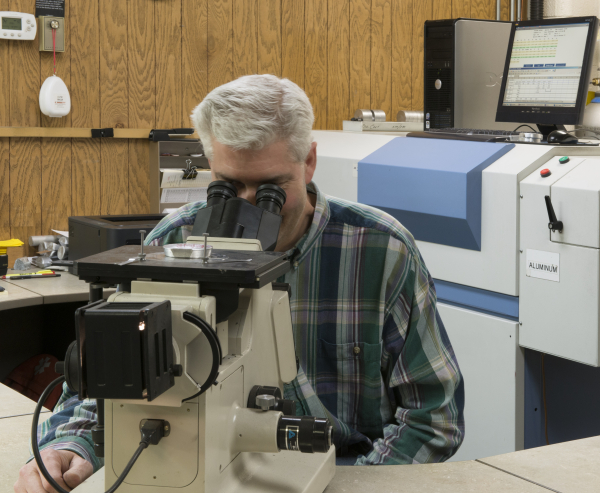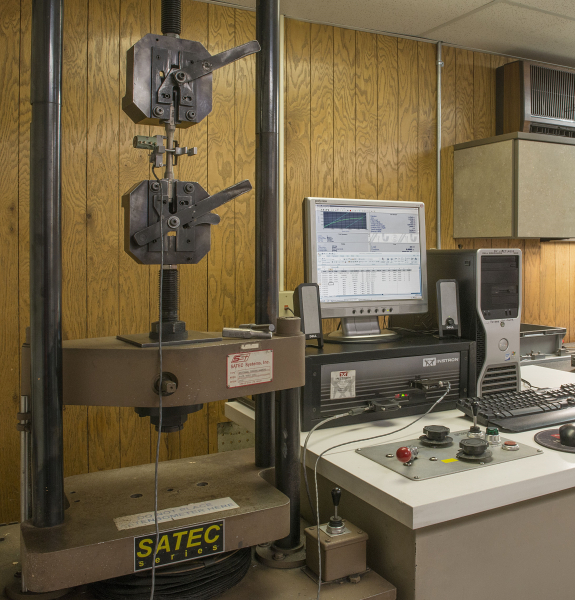Metallurgical and NDT Laboratories
Material Evaluation (Metlab Testing)
Metallurgical evaluation verifies two material characteristics, the alloy chemistry, and the alloy strength (mechanical properties).
The chemical composition validates the alloy designation. LSI uses an Optical Emission Spectrometer (OES) to verify the chemistry of our purchased alloys, and to verify individual melting furnaces throughout the manufacturing facility. The OES works by creating a high energy spark on the test specimen. The light created by this spark is passed through a diffraction grating (prism) and the light is broken into individual wavelengths. The intensity of these wavelengths is measured by detectors. The computer software determines the element percentages based on the detector data. The collected chemistry data is shared with our customers as desired.
The mechanical properties are determined by three measurement characteristics; ultimate tensile strength (UTS), yield strength (YS), and elongation. The data is obtained by the destructive testing of designated specimens (test bars). The test bars are heat treated with the castings they represent. The data is determined by breaking the test bars in a Universal Testing Machine (UTM). The test specimens are pulled to failure. The collected mechanical data is shared with our customers upon request.
Nondestructive Testing (NDT)
Nondestructive testing is used for the detection of surface and internal casting defects. As the name implies, these test methods do no harm to the castings themselves. LSI utilizes two methods of NDT; radiographic and liquid penetrant testing. These two tests provide insight on the quality of the casting as it relates to latent casting defects.
Radiographic Testing (X-ray) is used to determine the internal quality level of a casting. The resultant digital images are compared to existing industrial standards that classify and quantify any defects within. Radiographic NDT is used by LSI to monitor our molding processes, and provide test certifications to customers as required.
Liquid Penetrant Testing, also referred to as Dye Penetrant Inspection, is used to detect surface defects that may escape a typical visual examination. A fluorescent dye is spread over the surface of a test specimen, and allowed to seep/soak into any surface irregularity. The excessive surface dye is rinsed away, and the casting is examined under black light. Residual dye that may have been trapped within a surface flaw will be detectable by an emitted yellow glow under examination. Test certification is provided to customers as required.
Le Sueur Incorporated specializes in producing dimensionally complex, pressure tight aluminum castings and thermoplastic injection molded components. We offer complete in-house precision casting machining, finishing and assembly. Please contact us to learn more about our capabilities and discuss your casting project!



